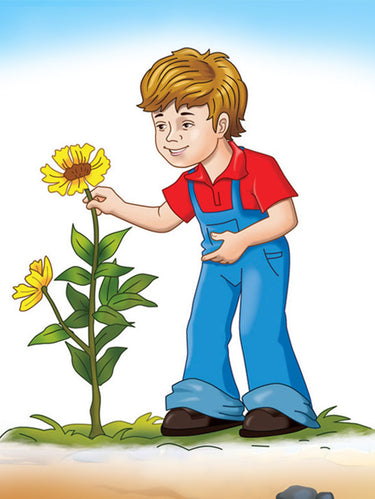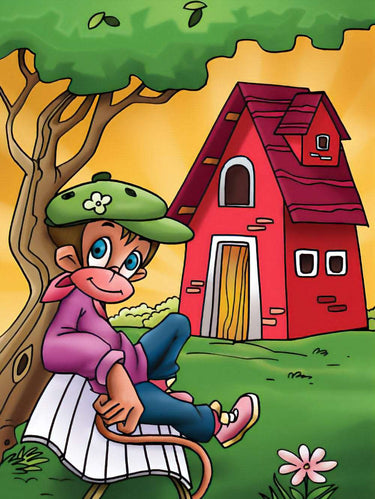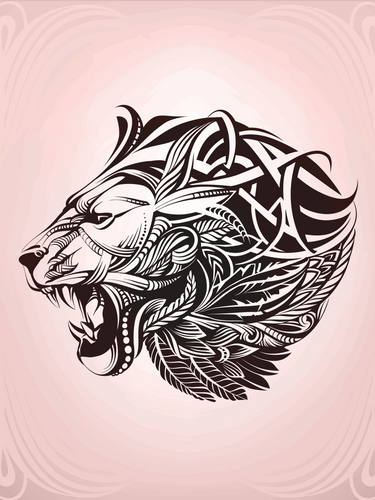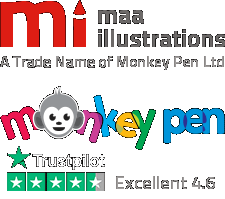In veterinary medicine, where animal welfare is key, medical illustration develops as an essential tool for communication, education, and clinical practice. Medical illustration has a wide range of applications, from displaying anatomical features to explaining surgical operations and disease processes. It helps to improve comprehension, facilitate diagnosis, and promote the best standards of animal care. This article discusses the various applications of medical illustration in veterinary medicine, emphasising its importance in veterinary education, clinical practice, and research.
Medical illustration is an important technique in veterinary medicine, particularly for visually depicting animal anatomy and physiology. It contains precise illustrations, graphs, and charts that show the structure and operation of various anatomical systems, which help veterinary students, practitioners, and pet owners understand animal physiology and pathology. Medical illustration is especially useful for depicting surgical operations, which can range from routine to intricate. It provides visual tools for surgical teaching and planning, resulting in safe, effective, and optimal outcomes for animal patients.
Medical illustration also helps to interpret diagnostic imaging modalities such as radiography, ultrasound, and magnetic resonance imaging (MRI). It allows doctors to accurately diagnose and treat a variety of medical issues in animals. Medical illustrations also help pet owners understand their animals' health, medical issues, and treatment alternatives. It is used in instructional materials, veterinary websites, and client handouts to describe veterinary operations, disease processes, and preventative care strategies. This enables pet owners to make informed decisions regarding their animals' health and well-being, so increasing compliance with veterinary recommendations and fostering positive results for animal patients. In addition to clinical practice and education, medical illustration helps to promote veterinary research by visually recording research findings, experimental procedures, and scientific principles. It promotes knowledge sharing, collaboration, and innovation among veterinary scientists, ultimately improving animal health and welfare.
Veterinary medical illustrators are needed in a variety of fields, including anatomy and physiology education, surgical procedures, disease pathology and diagnosis, veterinary pharmacology and pharmacokinetics, dental health, orthopaedics and rehabilitation, wildlife conservation and zoological medicine, client education and communication, and research and publication support. Animal medical artists make realistic anatomical images of numerous animal species, including the skeletal, muscular, circulatory, neurological, and other physiological systems. These pictures are useful educational resources for veterinary students, educators, and practitioners, helping them study and understand comparative anatomy and physiology across species. Surgical methods and techniques are clearly taught using pictures and diagrams, allowing veterinary surgeons to plan and perform surgeries with greater precision. Disease pathology and diagnosis are also depicted, assisting veterinarians in recognising and diagnosing diseases that affect a variety of species, including companion animals, cattle, exotic animals, and wildlife.
Medical illustrators create images and diagrams that explain the mechanisms of action, pharmacokinetics, and therapeutic applications of veterinary drugs and medications. They help veterinarians prescribe medications, calculate dosages, and educate pet owners about medication administration and potential side effects. Oral health is shown and diagrammed to assist veterinary dentists and technicians in educating pet owners about oral hygiene, preventive dental care, and treatment choices for dental disorders and ailments. Oncology and radiation therapy are explained with pictures and diagrams to help veterinary oncologists diagnose and treat cancer in animals, as well as educate pet owners on treatment options, prognosis, and supportive care. Finally, veterinary medical illustrators work with veterinary researchers, scientists, and authors to generate illustrations, figures, and diagrams for research papers, textbooks, scientific journals, and conferences.
To conclude, medical illustration is an important tool in veterinary medicine because it improves comprehension, facilitates diagnosis, and promotes animal welfare. It helps to visualise anatomy, perform surgical procedures, interpret diagnostic images, and educate pet owners. As veterinary medicine advances, medical illustration will remain critical in bridging information, improving care, and increasing animal health. It combines education, therapeutic practice, research, client communication, and wildlife conservation. Veterinary medical illustrators contribute to the improvement of knowledge, skills, and compassionate treatment, which benefits animals, pet owners, veterinary practitioners, and society in general.






